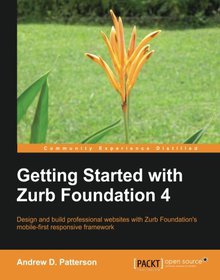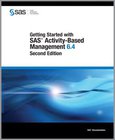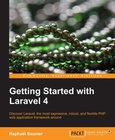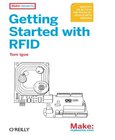Getting Started with Zurb Foundation 4

Book Details:
| Publisher: | Packt Publishing |
| Series: | Packt , Getting Started |
| Author: | Andrew D. Patterson |
| Edition: | 1 |
| ISBN-10: | 1782165967 |
| ISBN-13: | 9781782165965 |
| Pages: | 126 |
| Published: | Nov 25 2013 |
| Posted: | Nov 19 2014 |
| Language: | English |
| Book format: | |
| Book size: | 1.03 MB |
Book Description:
Design and build professional websites with Zurb Foundation's mobile-first responsive framework Overview Get up to speed quickly with Foundation's responsive grid system Integrate easy-to-configure CSS components into your website Add powerful JavaScript plugins to your web pages In Detail Every web designer needs a toolkit. From text editors to graphics programs, from table structures to fluid style sheets, the web designer has many tools and techniques to choose from. Zurb's Foundation framework is an excellent kit for today's web designer. It's fluid, it's easy to work with, it has plenty of components, and most importantly, you can apply your creativity to make your very own designs. Zurb's Foundation 4 is a practical, easy-to-use toolkit for the layout and construction of web pages. Getting Started with Zurb Foundation 4 introduces Zurb Foundations powerful web design and development toolkit. Learn how to create professional layouts with ease, add powerful CSS and JavaScript components to your pages, and then customize and configure the design to your satisfaction. Understand how to efficiently manage your CSS and layout your pages with SASS, the style sheet language. This book will help you put Foundation 4 to work for you today! This book documents Foundation's grid system, all its components and plugins, and its generation of custom style sheets. The book serves as an all-encompassing introduction as well as a future reference guide. The foundation of Foundation is its grid system...and there is a whole lot more . Once you've covered the basics, you'll be ready to advance with SASS, the style sheet language, to customize your installation and layout your pages. With this book, you will discover all the CSS components and JavaScript plugins that are included in Foundation at the present time and learn how to integrate each of them into your web pages. What you will learn from this book Understand the grid system and how it applies to web design Tweak your layout to get the best view on mobile and desktop displays Incorporate Foundation's CSS components into your web pages Configure and customize your CSS components Place Foundation's JavaScript plugins where you want them Organize your CSS using SASS, the style sheet language Create your own custom installation of Foundation with SASS Approach The book starts with the basics of Foundation and helps you build your skills as you advance from installation to design, configuration, and customization with examples at every step. Who this book is written for This book will be of great benefit to web architects, designers, and builders. While it helps to be a programmer, it isn't necessary for this book. You should be familiar with the basic principles of responsive web design and have a desire to create a professional website that looks great on both mobile devices and regular displays.
Download Link:
Related Books:
Getting Started with SAS Activity-Based Management 6.4
2nd Edition
This document introduces basic modeling concepts that are used in SAS Activity-Based Management software. To complete the model-building process, move through this tutorial from beginning to end, exactly as it is presented. This tutorial also provides information that helps you become familiar with the SAS Activity-Based Management software: the concepts, terminology, commands, and dialog boxes....
Getting Started with Laravel 4
Discover Laravel one of the most expressive, robust, and flexible PHP web application frameworks around Overview Provides a concise introduction to all the concepts needed to get started with Laravel Walks through the different steps involved in creating a complete Laravel application Gives an overview of Laravel's advanced features that can be used when applications grow in complexity Learn how to build structured, more maintainable, and more secure applications with less code by using Laravel In Detail PHP powers many of the largest websites on the planet. Yet, even though it was specifically created for the Web, its shortcomings never cease to frustrate developers. This is where a tool like Laravel comes in. Rather than reinventing the wheel, L...
Getting Started with RFID
Identify Objects in the Physical World with Arduino
If you want to experiment with radio frequency identification (RFID), this book is the perfect place to start. All you need is some experience with Arduino and Processing, the ability to connect basic circuits on a breadboard with jumper wire-and you're good to go. You'll be guided through three hands-on projects that let you experience RFID in action. RFID is used in various applications, such as identifying store items or accessing a toll road with an EZPass system. After you build each of the book's projects in succession, you'll have the knowledge to pursue RFID applications of your own. Use Processing to get a sense of how RFID readers behave Connect Arduino to an RFID reader and discover how to use RFID tags as keys Automate your office or home...
2007 - 2021 © eBooks-IT.org



